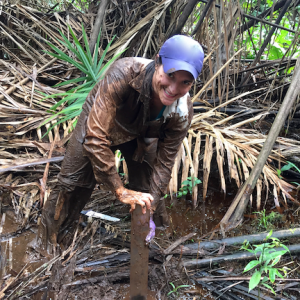New research from the UF/IFAS Wetland Biogeochemistry Laboratory in the Soil and Water Sciences Department looks at peatlands, a type of wetlands that occur around the world and store large amounts of carbon. Specifically, the study examines carbon and its chemical make-up in the soil organic matter of peatlands. The work comes from Dr. Anna Normand’s dissertation research. Normand graduated with a Ph.D. in soil and water sciences in 2017 and now works at the Congressional Research Service, Washington, D.C.
“Peatlands influence climate because of their carbon storage and potential carbon emissions,” Normand explained. “Carbon storage is at risk due to climate and land-use changes. That may increase microbial production of carbon dioxide and promote future warming.”

Normand researched the soil carbon of 125 peatlands from six different continents. She investigated how their chemical composition differs and in turn influences microbial activity, greenhouse gas production, and potential soil loss.
“We found that the chemical composition of soil organic matter in peatlands varies greatly, mostly due to temperature and land-use; however, we show that one parameter of this composition responds strongly to these environmental factors and predicts the risk of carbon dioxide release from peatlands following drainage,” Normand said.
Normand’s paper concludes that this explicit link provides a simple parameter that can improve models of peatland carbon dioxide fluxes. You can read more about the research in Geophysical Research Letters: https://doi.org/10.1029/2021GL093392
Normand and her colleagues collaborated with the Advanced Magnetic Resonance Imaging and Spectroscopy (AMRIS) facility at UF for scanning soils for chemical analysis. They also received many samples from the Global Peatland Microbiome Project. Support for the work came from the National Science Foundation and an AMRIS external user award.
 0
0
